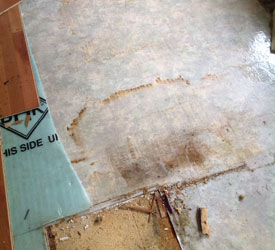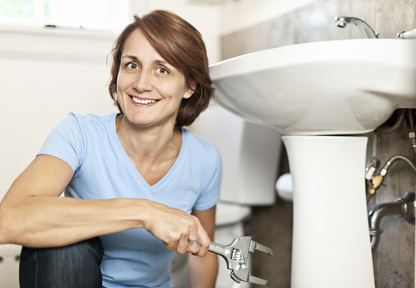Almost everyone is bound to have their personal way of thinking about How to Fix a Water Damage Bathroom.

The shower room is exceptionally at risk for wet accumulation and possible water damage due to the regular use of water in it. This post uses basic assessment methods to assist finding water damages hazards.
The frequent use of water in the bathroom makes it incredibly vulnerable for moist accumulation and potential water damage. By inspecting it routinely, you can decrease water related damages.
The following set of evaluations is easy to execute and also need to be done as soon as in every 3 months in order to maintain your shower room healthy as well as to stop prospective water problems triggered by the tub, the shower, pipe joints and plumbing, sinks, cabinets, and also the toilet
Do not forget executing these examinations and also be detailed while executing them. Bear in mind that these basic evaluations can save you a lot of cash by supplying early indications for water damages
Tub as well as Shower
The shower and bath tub call for unique attention and upkeep. Inspect the tiles and change if split. Ensure that there is no missing cement between the tiles. Evaluate and replace fractured caulking at joints where the wall surfaces satisfy the floor or the bathtub. Clogged drains pipes and also pipes problems will protect against the bath tub from drying out as well as may show severe issues below the bathtub. Seek advice from an expert right away to prevent architectural damages. Take note of stainings or soft locations around the bath tub wall surfaces as they may indicate an inner leak.
Plumbing
Signs for water damage are tough to discover because the majority of pipelines are mounted inside the wall surfaces.
Pay special focus to flooring and also walls dampness and discolorations as they may suggest an unnoticeable plumbing trouble. Check moisture degrees in adjoining spaces too.
Sinks and Cabinets
Sinks as well as closets are exposed to wetness and also humidity everyday and also are often neglected. Check consistently under the sink and on the kitchen counter above it. Repair any kind of drip in the trap as it may recommend drain issues. Check out the sink, slow draining pipes might indicate a blocked drainpipe. Replace sink seals if they are broken or loosened.
The Toilet
The bathroom is a prone water junction. Inspect the water lines as well as look for leaks around the bathroom seat, in the pipe, as well as under the water container. If you detect any indications of wetness on the flooring around the commode, look for leakages in the toilet edge and tank seals.
Understand that hanging bathroom dish antiperspirants boosts the opportunities for obstructions.
Water Damage Signs In The Bathroom To Avoid Cleanup
Musty smell
This is one of the easiest signs to catch because musty smells are so odorous. The damp, earthy, moldy smell should be a big red flag. The smell will develop when moisture gets trapped in surfaces, and begins to facilitate mold growth. Leaking pipes under cabinets, inside walls, and behind shower fixtures will cause moisture to stay trapped and not dry, which will lead to mold growth and spread. As soon as you notice any musty smells in your bathroom, have it checked for hidden water damage and cleanup signs.
Visible mold
If the smell isn’t there to give it away, sometimes you will actually see mold growth. Finding mold in your bathroom is a serious problem, because mold is very harmful to your health. By the time mold growth is visible, it also means that water damage has already occurred and been present for some time. The only way the mold problem can be resolved is to find the source of the moisture and get it stopped. To safely and adequately remove mold, you need to have professionals handle the remediation. Do not waste any time in getting mold problems addressed, fixed, and sanitized so that you can protect you and your family from the many respiratory symptoms caused by mold exposure.
Damaged floors
Bathroom floors should be able to withstand some exposure to water while still remaining in good condition. However, when excess exposure or water leaks occur, they will begin to damage even the most water-resistant flooring. If you notice any cracking, bubbling, staining, or warping on your bathroom floors, there is probably a water leak somewhere causing the distortion. If you notice areas of the floor have become softer, or even have a spongy feeling, there is probably damage to the subfloor. Subflooring is typically made up of plywood. When plywood is exposed to water or moisture, it will absorb it. Once it has become saturated, the weight of the excess water will cause the wood to swell and soften. Check the floors in your bathroom frequently to catch any of these sings before they lead to damaged subflooring.
Changes on walls
When water leaks behind walls, it will cause changes in the drywall. Peeling plaster, blistering paint, and soggy wallpaper are all good indicators that excess water is building up behind the wall. Water leaking behind drywall will cause it to swell and be soft to the tough. If you start to notice gaps along the trim of your walls, or where tile meets the wall, it could also be a strong indicator that there is a leak behind the wall. Any changes, distortion, or damage on the walls should be evaluated as soon as you notice it to prevent further water damage and cleanup.

Do you appreciate reading up on How to Prevent Bathroom Water Damage? Put a remark further down. We would be glad to know your suggestions about this page. Hoping that you visit us again before long. Do you know anybody else who is occupied with the niche? Why not promote it. Thank-you for taking the time to read it.
Click Here To Find Out More